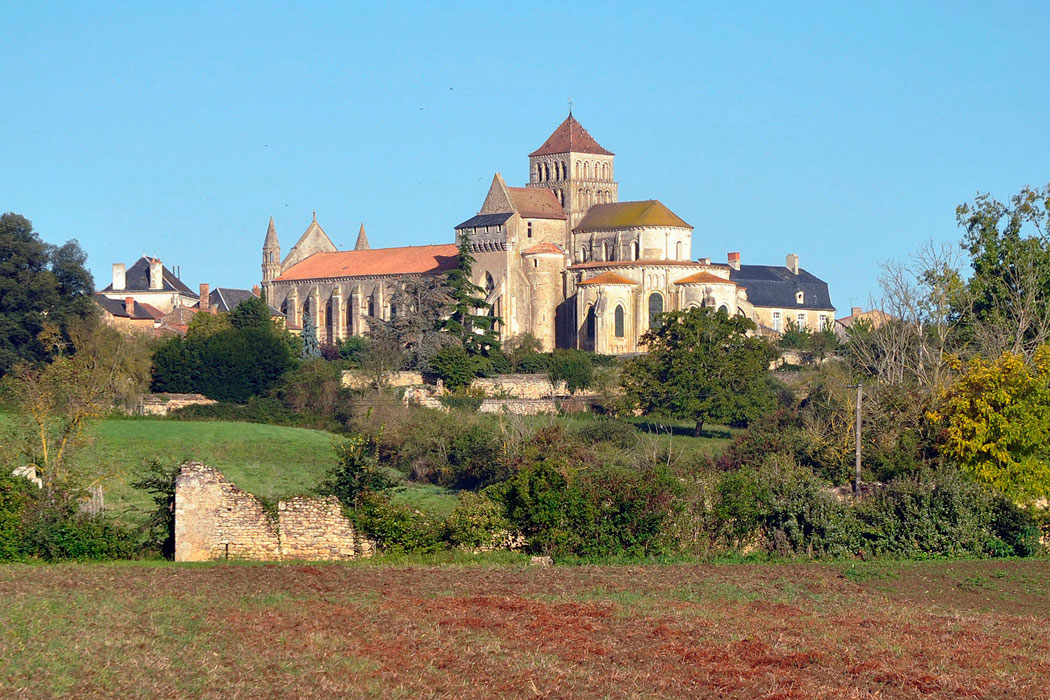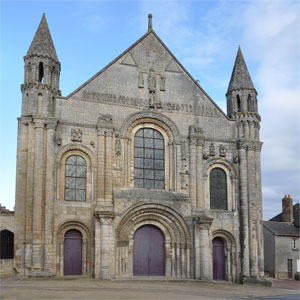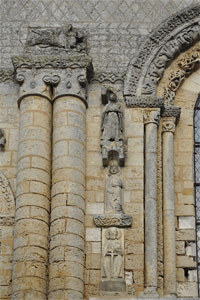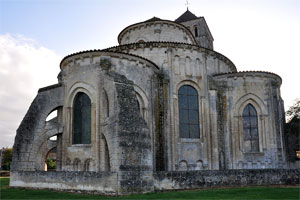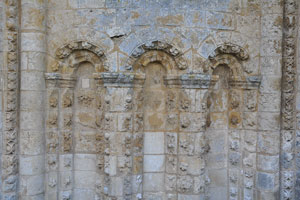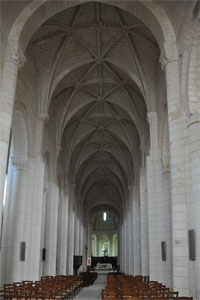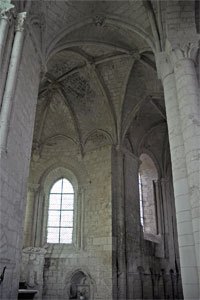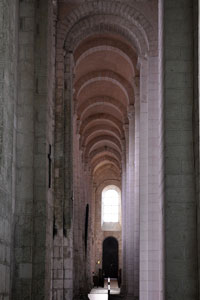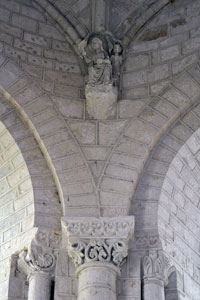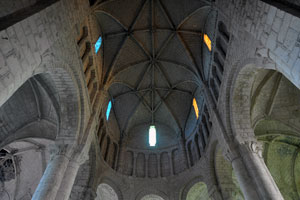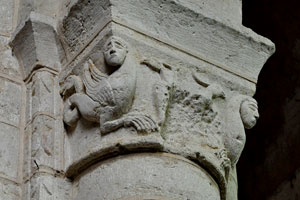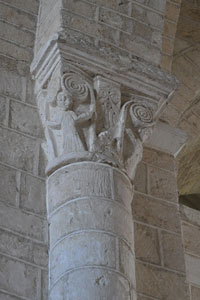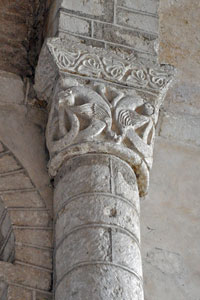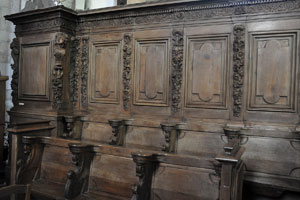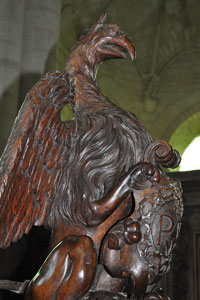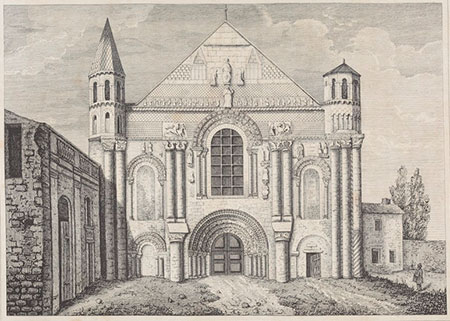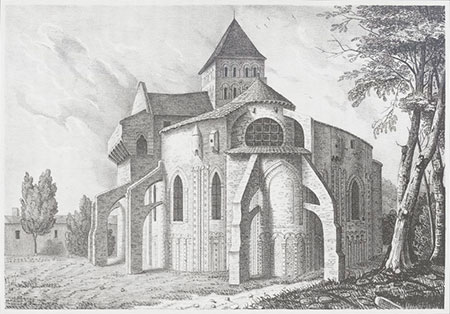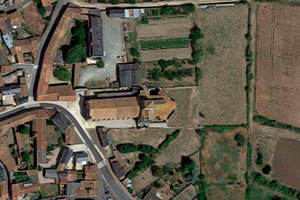Abbey of Saint-Jouin-de-Marnes
Ension / Ansion / S Jovinus de Marnis
(Saint-Jouin-de-Marnes, Deux-Sèvres)
The Benedictine abbey of Saint-Jouin-de-Marnes has its origins in the monastery of Ension, which, according to tradition, was founded here in the mid-4th century by followers of the hermit Jovinus (or Jouin, † c. 368), who had settled in the area. Around the year 576, Martin de Vertou (6th century), also a former hermit and founder of the monastery of Vertou (near Nantes, Loire-Atlantique), became abbot of Ension. Saint Achard († 687) was also a monk of this monastery and would later become abbot of Saint-Pierre de Jumièges (Seine-Maritime).
During the second half of the 8th century, Ension suffered from the conflicts affecting the region, leading to a weakening of monastic discipline and, eventually, occupation by a canonical community. In the 9th century, monks from Vertou took refuge at Ension to escape the Norman invasions, bringing with them the relics of their founder, Martin de Vertou. At that time, they introduced or restored the Rule of Saint Benedict, acknowledging that it might have already been practiced there in the 6th century. This reform met with resistance from the canonical community, which was eventually forced to accept it.
From 876 onwards, the house was known as Saint-Jouin d’Ension, but later retained only the name Saint-Jouin. In the 10th century, the community of Vertou was able to return to its original site. In 1095, construction began on a new, larger abbey church, coinciding with the translation of relics kept there: Saint Jovinus, Saint Martin de Vertou, and others. The church was consecrated in 1130. A papal bull from Alexander III in 1179 confirmed the abbey’s numerous possessions and placed it under the direct protection of the Holy See, indicating its prosperity.
This long period of prosperity was interrupted by the Hundred Years’ War. In this context, during the second half of the 14th century, the monastery was fortified. Once this threat had passed, major works were carried out in the second half of the 15th century, including the construction of the Gothic cloister. By the end of the century, the monastery came under the rule of commendatory abbots. It was also affected by other events, such as the Wars of Religion (1568–69), during which it was pillaged by its own abbot and left in ruins.
In 1655, the abbey joined the Congregation of Saint-Maur, giving it new momentum and supporting its revival. The abbey was closed during the Revolution, at a time when it had already fallen into decline. After the community was dissolved, the site suffered from neglect.
The church is a large building with three naves spanning ten bays, a transept, and a chevet formed by a large apse containing the presbytery, surrounded by an ambulatory with three chapels. Each arm of the transept also includes an additional chapel. Most of the building dates from the 11th and 12th centuries, although it was later modified and restored due to war damage. Major restoration works were also carried out in the second half of the 19th century, when the church became a parish. In addition to the church, one gallery of the Gothic cloister and some secondary buildings are still standing.
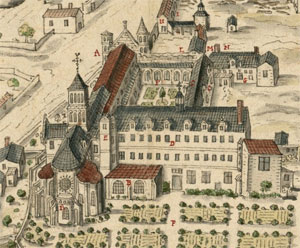
Detail of Plan de l'abbaye de Sainct Iouin de Marne (1699)
Louis Boudan (s. XVII)
Bibliothèque nationale de France

Monasticon Gallicanum
Bibliothèque nationale de France
- ANÒNIM (s. d.). Saint-Jouin-de-Marnes. L’église abbatiale. Les Amis de l’Abbatiale de Saint-Jouin-de-Marnes
- ARNAULD, Charles (1843). Deux-Sèvres. Première série : monumens religieux, militaires et civils du Poitou. Niort: Robin
- AUBER, Charles Auguste (1869). Histoire de Saint Martin, abbé de Vertou et de Saint-Jouin-de-Marnes. Poitiers
- BEAUNIER, Dom (1910). Abbayes et prieurés de l'ancienne France. Vol. 3: Auch, Bordeaux. Abbaye de Ligugé
- BERTHELÉ, J. (1885). L'église de Saint-Jouin-les-Marnes (Deux-Sèvres). Bulletin Monumental. Paris/Caen: Champion/Blanc-Hardel
- CAMUS, Marie-Thèrese (2004). Saint-Jouin-des-Marnes, réflexion sur les chantiers romans de l’abbatiale. Congrès archéologique de France, 159e session, 2001, Deux-Sèvres. Société française d’archéologie
- GARROS, Benoît (2008). Saint-Jouin-de-Marnes, cloître de l'abbaye. Archéologie de la France
- GUÉRIN, Paul (1888). Les Petits Bollandistes. Vies des saints. Vol. 6 i 12. París: Bloud et Barral
- LEDAIN, Bélisaire (1884). Notice historique et archéologique sur l’abbaye de Saint-Jouin de Marnes. Poitiers: Tolmer
- LEROSEY, A. (1906). Ension ou Saint-Jouin-les-Marnes. Paris: Société Française d’Imprimerie et de Librairie
- LEROSEY, A. (1915). L'Abbaye d'Ension ou de Saint-Join-de-Marne. Niort: I. Niortaise
- PEIGNÉ-DELACOURT, Achille (1877). Monasticon Gallicanum. Paris: G. Chamerot
- SAINT-MAUR, Congregació de (1720). Gallia Christiana in provincias ecclesiasticas distributa. Vol. 2. París: Typographia Regia
